
~~~~~~~~~~~~~~~~~~~~~~~~~~~~~~~~~~~~~~~~~~~~~~~~~~~~~~~~
TBPNews #145-Oct 21 2011
~~~~~~~~~~~~~~~~~~~~~~~~~~~~~~~~~~~~~~~~~~~~~~~~~~~~~~~~
>>>> Tunnel Boat Performance News
>>>>>> (over 5000
members!)
========================================================
In this issue:
1)
Docudrama on Legendary Boat Racing Team Nearing Completion
2) Mercury Builds The Ultimate 150 Four Stroke
4) FEATURE: "Propeller Testing"
5) Powerboat P1 Calls For Move Away From 'Chequebook Racing'
6) CHRISTMAS! - "Secrets of Tunnel Boat Design" book & TBDP/VBDP V7.13 software!
8) Jimboat's NEW Feature Articles
******************** TBPNews
*******************
Check out review
of Jimboat's 13th Ed. "Secrets of Tunnel Boat Design" book in the last HotBoat
magazine printed!
1) Docudrama on Legendary Boat Racing Team Nearing Completion
 Gravenhurst, Canada - Legend has it some 350,000 people once lined the Detroit River to witness the raw speed, grace and power of the Wilson family on water. Lorna and Harold Wilson raced speed boats from the late 1920s through the ’50s. When their famed wooden race boat Miss Canada IV hit the water, their legend grew.
Gravenhurst, Canada - Legend has it some 350,000 people once lined the Detroit River to witness the raw speed, grace and power of the Wilson family on water. Lorna and Harold Wilson raced speed boats from the late 1920s through the ’50s. When their famed wooden race boat Miss Canada IV hit the water, their legend grew.
An impending docudrama on his parents has taken a major step forward and is nearing the finish line. “Our whole purpose is to grab hold of this history before we lose it. It’s a story that was nearly forgotten and that’s the reason behind this.” Compiled during the past spring and summer, the film is being put together from about 16 hours of footage, some filmed in Muskoka. It is now in the editing room, according to Harry Wilson, the couple’s son.
The goal this winter will be to whittle that down into a full-length, feature film version and a shorter, 40- to 45-minute television version, ideally for release later next year.
Wilson is working with crews from Muskoka Film Works Inc. to create the film, titled “Harold and Lorna.” The Wilsons captured not just the country’s attention, but that of the world, becoming the first Canadians to win the President’s Cup. They won three world championships, two North American speed records and shattered the world record for speed on water about 60 years ago.
The Greavette-built Miss Canada IV, the Wilsons’ most prized boat, had been on display at the Ingersoll Cheese and Agricultural Museum since 1992 until earlier this year. It was purchased by Bobby Genovese, a business entrepreneur originally from northern Ontario who owns a cottage on Lake Rosseau. Miss Canada was brought back to the waters of Lake Muskoka this past June as the focal point of a Welcome Home Miss Canada IV celebration day. The boat was then taken to Tom Adams’ boat shop in Port Carling for restoration work.
Check out more at: cottagecountrynow.ca
******************* TBPNews ******************* [return to top]
2) Mercury Builds The Ultimate 150 Four Stroke
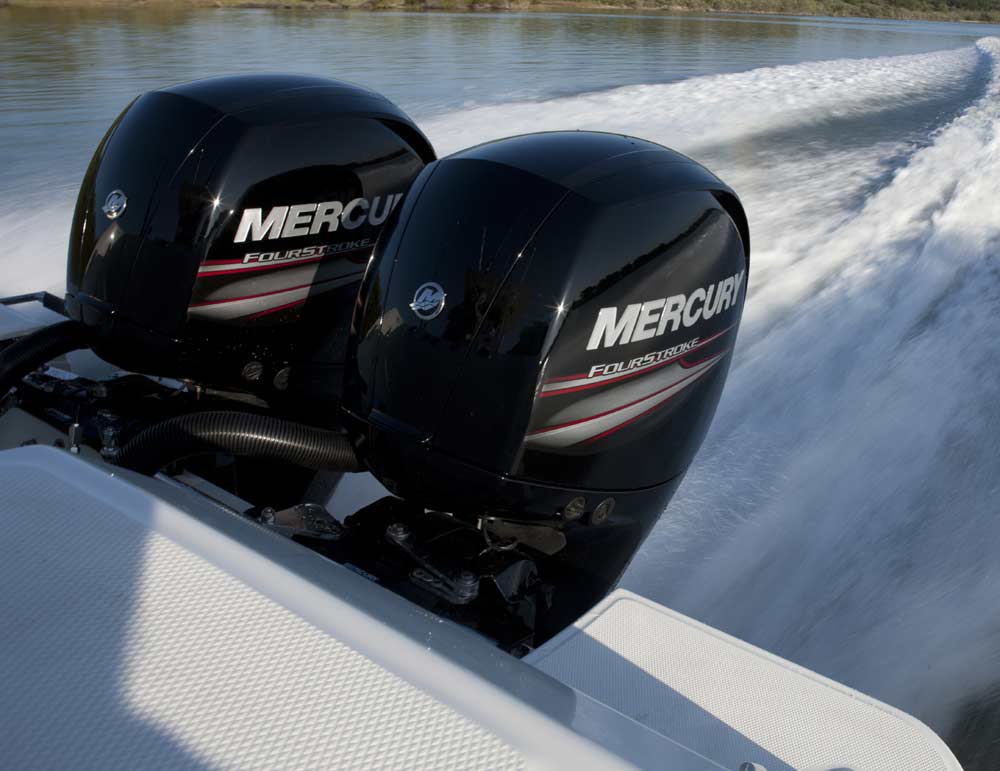 Mercury Marine’s new 150 Four Stroke – the ultimate 150 hp EFI outboard engine for boaters seeking an engine that offers unprecedented world-class durability under all conditions and is light enough to deliver superb fuel efficiency and tremendous performance – is the new top choice for offshore, inshore bay, flats, aluminum, bass, pontoon, runabout, RIBs and aluminum bass boats.
Mercury Marine’s new 150 Four Stroke – the ultimate 150 hp EFI outboard engine for boaters seeking an engine that offers unprecedented world-class durability under all conditions and is light enough to deliver superb fuel efficiency and tremendous performance – is the new top choice for offshore, inshore bay, flats, aluminum, bass, pontoon, runabout, RIBs and aluminum bass boats.
Despite the naturally aspirated engine’s remarkable small size and low weight, the new 150hp outboard by Mercury boasts a 3.0-liter, four-cylinder in-line configuration that easily creates superior power for single or twin applications – from the lightest flat skiffs to the largest saltwater offshore hulls. In fact, it has more displacement than any other 150hp four-stroke engine, yet it delivers fuel efficiency at cruising speed that no other engine can beat.
Despite the list of precedent-setting features and benefits, Mercury’s new 150 is also affordable – about $2,500 less than the competition’s 150 hp engine. The new 150 Four Stroke is designed, built, and tested to be the most reliable and durable 150hp four-stroke on the planet, which means it will start and run consistently and last longer on any body of water anywhere in the world. The massive torque curve of the new 150 Four Stroke ensures that even the heaviest boats will plane quickly. And if you’re looking for room to fish, this multi-use engine fits nicely under poling platforms on flats boats and in pontoon motor wells, and is easier to fish over and around than all competing engines of equal horsepower.
It’s also the perfect option for boaters choosing to repower their boats, especially older models with transoms not designed to accommodate the weight of conventional four-strokes. Mercury’s new outboard is by far the lightest 150 hp engine, weighing just 24 pounds more than the popular Mercury OptiMax 150 direct-injected two-stroke. With almost 20% fewer parts than a Yamaha F150, the Mercury 150 Four Stroke proves that technology can be used equally well to deliver durability and performance while simultaneously reducing package size and weight.
Gear housing Hydrodynamics: To house its larger gear set and internal components, the 150 Four Stroke requires a larger gearcase housing. The 150 FourStroke's gearcase, however, challenges the rules of physics with its larger, yet ultra-efficient hydrodynamic profile. In fact, the 150 FourStroke's gearcase housing, while significantly larger in diameter and longer in torpedo length, features better hydrodynamics than gearcases found on 90-115 hp class outboards.
The new Mercury 150 Four Stroke will be available by December, 2011, in time for the 2012 boat show season.
Check out more at mercurymarine.com
******************* TBPNews ******************* [return to top]

 Check
out these great videos....
Check
out these great videos....
............1983 Houston qualifying heat
Jimbo McConnell's 1st Unlimited heat at the 1983 Houston World Championships
............1983 Final heat
Renato Molinari finishes 2nd but disqualified; Jimbo finishes 3rd, ends up 2nd place overall
******************* TBPNews
*******************
[return to top]
4) FEATURE: "Propeller Testing"
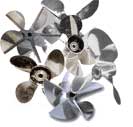 The most practical way to determine the best prop for your boat is through testing. A good testing process will often generate dramatic results in performance. Also, testing propellers can be time-consuming and sometimes frustrating, so you should be prepare yourself for the details of prop testing. In order to maximize the performance of your boat, propeller testing is an essential process.
The most practical way to determine the best prop for your boat is through testing. A good testing process will often generate dramatic results in performance. Also, testing propellers can be time-consuming and sometimes frustrating, so you should be prepare yourself for the details of prop testing. In order to maximize the performance of your boat, propeller testing is an essential process.
Here are a few recommendations to make your prop-testing beneficial.
1. Keep lots of records – Record ALL your data while you're testing. Ideally, it would be best for you to be able to evaluate all your test props under exactly the same conditions - same fuel load, same air temperature, same water conditions and same weather circumstances - however this is not always possible. So, keeping a good test record log of the details of each test will be very helpful when you evaluate your testing.
2. Do your homework – get together all of your knowledge about your boat, engine & setup (such as the engine manufacturer’s recommended maximum rpm).
-Be clear on your goal – You can’t select the ‘best’ propeller for your boat until you’re clear on what you are wanting to achieve. For example – “I want to get on plane fast” OR “I need great mid-range” OR “I want a faster top end”.
-If fuel economy is a goal, then a fuel measurement gauge on your boat will be really helpful.
3. Test log - for each test, take the time to accurately record the date; time of day and each of these details:
• engine RPM
• propeller specifications (manufacturer, model, pitch, diameter, finish, condition)
• engine temperature & engine cooling water pressure
• weather conditions (temperature, pressure, humidity)
• boat payload weights - fuel load, passenger position and weight in boat
• water conditions (smooth, choppy, direction of waves, etc.)
• engine trim setting & engine height setting (or X-dimension)
• acceleration (seconds to get from one speed to the next test speed)
• fuel economy/rate (gallon per minute)
• observed “rooster-tail” (height, length, ‘weight of rooster spray”)
• visual & audio observations
Record all of these measurements at several velocities. You’ll be glad to have the data at intermediate speeds in addition to your maximum speed to help with your evaluation later.
 4. Accuracy – Recording velocity measurements accurately is vital, so using a radar gun, portable GPS or a GPS-speedometer for speed readings is often helpful. -Be aware that data feedback to your GPS speedometer can be delayed and the reading may lag by several seconds after you reach your measurement speed. To reduce this effect, hold each test velocity for a few seconds when using a GPS. A high-accuracy pressure speedometer (with a pitot tube pickup) is also a good way of recording speed. This system is usually very accurate but often does not keep it’s own record of the test speed.
4. Accuracy – Recording velocity measurements accurately is vital, so using a radar gun, portable GPS or a GPS-speedometer for speed readings is often helpful. -Be aware that data feedback to your GPS speedometer can be delayed and the reading may lag by several seconds after you reach your measurement speed. To reduce this effect, hold each test velocity for a few seconds when using a GPS. A high-accuracy pressure speedometer (with a pitot tube pickup) is also a good way of recording speed. This system is usually very accurate but often does not keep it’s own record of the test speed.
-Be sure that your motor’s tachometer is accurate. You can have your dealer check that your readings are accurate to a calibrated gauge. You can also check yourself by using a hand-held “clamp-on” induction tach to compare your engine tach readings at different settings.
-Most important for all of your gauges, is that they read consistently. Even if the readings are not absolutely accurate, if they remain consistent under all conditions, you will be able to compare your results of each different propeller and each test.
-For example, if you change the height of your engine slightly and your RPM reading is a few hundred different than the last run, you want confidence that the change in RPMs is due to your setup change and NOT because of an inconsistency in your gauges.
5. Propeller Test Method: - Measure your results to your engine manufacturer’s specified maximum operating RPM. Monitor the water pressure gauge closely - if you run out of water pressure, your engine can overheat quickly.
-Do a test for each propeller and setup using two (2) runs to full throttle (WOT), trimming the motor angle to achieve maximum speed. When RPM continues to climb without a corresponding increase in speed, the highest trim point for that particular setup has been exceeded.
-It is important to select your propeller to achieve the proper engine RPM. That means not too low RPM and not too high RPM at maximum attainable RPM. This will achieve the best performance from your rig and also protect your engine from overloading. For example, over-propping (pitch is too high) a boat/engine setup can cause “lugging” of the engine (too much load).
A thorough test process could actually change ALL of the setup measurements that you are recording in your log. For example, different engine heights, different payload weight, etc for each propeller run. It can be time consuming but your recorded data will allow you to make the best prop selection for your setup and operating expectations.
During the testing process, you may experience these observations:
• RPM too high (and not over-trimmed) - a higher pitch propeller could be used; or engine height (x-dimension) is set too high.
• RPM too low (and not under-trimmed) – a higher engine height (x-dimension) could be used and/or lower propeller pitch.
• Rooster tail appears too high (and not over-trimmed) - engine too high or excessive propeller slippage (test a different propeller)
[IMPORTANT NOTE: There are really no “rules of thumb” for propeller selection. These observations and corrective actions are frequently experienced. But not always!…Sometimes a higher pitch propeller can carry the hulls weight better, resulting in a gain in both RPM and maximum speed. Only experimentation will reveal how your particular propeller/hull/engine responds to these changes.]
6. Test a “Clean” Propeller - Be sure that the propeller you’re testing is free from dents, nicks or other imperfections. All of your testing efforts will be futile if your props are not in perfect condition. If your prop has any small nicks and burrs, you should clean them up before you test.
See more Performance Articles at: aeromarineresearch.com/articles.html
Read more about Tunnel Boat design and setup in the world acclaimed "Secrets of Tunnel Boat Design" book
[Note: Do you have any of your own questions on performance hull design? Send your question or story to Jimboat@aeromarineresearch.com ]
******************* TBPNews ******************* [return to top]
5) Powerboat P1 Calls For Move Away From 'Chequebook Racing'
 Powerboat P1 has set out its vision for the future of powerboat racing at the 84th UIM General Assembly in Abu Dhabi.
Powerboat P1 has set out its vision for the future of powerboat racing at the 84th UIM General Assembly in Abu Dhabi.
The London-based promoter’s Chief Operating Officer, Robert Wicks, presented highlights of the 2011 SuperStock championships which saw more than 20 races at nine different venues across the United Kingdom and USA. He highlighted the fact that ‘parity’, ‘affordability’ and ‘accessibility’ for competitors are the cornerstones of the SuperStock series and how vital it is for powerboat racing to appeal to new markets.
Powerboat P1 launched the SuperStock series in 2010 and is rolling out plans to introduce the series in several new markets in 2012 and beyond. “We are building a series from the ground up with real credibility in conjunction with the national federations represented here this week. This will in turn increase interest and awareness, build new audiences and attract new commercial partners to the sport,” added Wicks.
The UIM General Assembly is the meeting of all national powerboat federations which get together annually in a structured networking environment to build relationships, expand horizons and broaden the sport’s collective endeavours.
See more at: powerboatp1.com
******************* TBPNews ******************* [return to top]
6) "Secrets of Tunnel Boat Design" book & TBDP/VBDP V7.13 software!
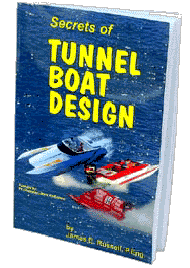 TBDP/VBDP© -
BIG NEW FEATURES...YOU ASKED FOR IT...NOW TBDP© HAS IT!....
TBDP/VBDP© -
BIG NEW FEATURES...YOU ASKED FOR IT...NOW TBDP© HAS IT!....
*** Full Vee Hull and Vee-Pad hull performance analysis (included in one software package!)
*** New aerodynamic algorithms.
*** Porpoise Analysis for Tunnel Hulls & Vee Hulls - We have developed a new analysis tool! XPorpoise is an
engineering tool developed by AR that predicts your hull's inherent
susceptibility to porpoising...and shows how to fix it!
*** User Picture import - right onto your TBDP© data input screen!
*** OEM Motor database, with over 960 OEM engine specs!
*** Centerpod Wangle input - now you have the ability to represent a special trim angle of the hull CenterPod that is different than the angle of
the Sponsons.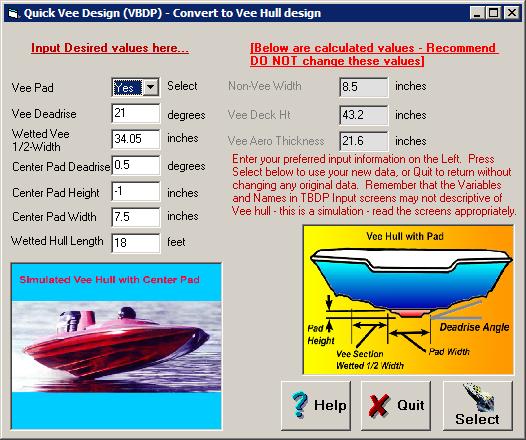
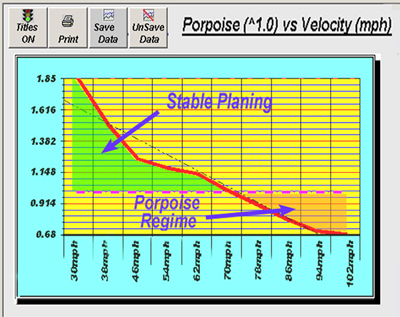 *** NEW USER picture import feature.
*** NEW USER picture import feature.
*** New CG import feature.
*** Dozens of NEW features - including VEE HULL DESIGN software INCLUDED.
*** NEW - Now can select Inside Spray Rails or Outer Spray Rails or BOTH. NOW input measured Static CG of boat hull if desired (otherwise TBDP© will calculate for you).
*** NEW - 'Rate-of-Change' performance analysis!
*** Free Expert Analysis Reports (4) included shows how you can apply expertise
to your design/setup.
...AND Lots more new great Features in V7.13 TBDP© software!
...check out the new TBDP© software V7.13 at:
aeromarineresearch.com
******************* TBPNews ******************* [return to top]
7) Powerboat Racing on TV
*** "Thrill Zone: Extreme
Powerboats" -
National Geographic powerboat show.
 Author Jim Russell (Jimboat) is powerboat design technical consultant on a new
National Geographic special for "Thrill Zone"
series...
Author Jim Russell (Jimboat) is powerboat design technical consultant on a new
National Geographic special for "Thrill Zone"
series...
Details at: (channel.nationalgeographic.com)
check out more at
AR's website! aeromarineresearch.com/NatGeo_thrill-zone.html
*** "Powerboat SuperLeague" Series - Check out show schedule at AmericaOne.com
*** "IHBA Lucas Oil Drag Boat Racing"
Series on SPEED TV - Check next show at
speedtv.com
*** "War On Water" TV
Show" on
The Water Channel - Check it out at: www.waterchannel.com;
*** "Boats on TV" - See at: www.boatson.tv
*** "American Powerboat
Television" on The Water Channel - See: americanpowerboat.tv
*** "Honda Formula 4-Stroke Powerboat Series"
-
Check
it out at:
www.f4sa.co.uk
******************* TBPNews ******************* [return to top]
 Jimboat interviews up-and-coming star of 2011 F1 H20 World Championship circuit, Shaun Torrente (Raceboat International magazine, May 2011 issue).
Jimboat interviews up-and-coming star of 2011 F1 H20 World Championship circuit, Shaun Torrente (Raceboat International magazine, May 2011 issue).
NEW - Jimboat explains "'Tunnel Vision' - How Does a Tunnel Boat Fly?" (RIB magazine Nov 2011 issue)
Jimboat details the speed secrets of 'Vee pad design', vee hull design (RIB magazine June 2011 issue)
Jimboat explains 'Gearcase & Propeller BlowOut' (RIB magazine April 2011 issue)
Jimboat explains 'How Trim Angle and engine height affects performance' (RIB magazine Jan 2011 issue)
Jimboat explains 'Chine Walking' (RIB magazine Dec 2010 issue)
[Jimboat writes Feature articles in HotBoat, Family&Performance Boating, Performance Powerboat, RIB magazine, World of Powerboats, RaceBoat International, SEA Yachting, Extreme Boats magazines].
-
Tunnel
Vision - 'How Do Tunnel Boats Fly?' - HB Nov/Dec 2008
- 'Why
Do Boats Create Rooster Tails?' -
HB-August 2008
- 'What
a Blow Out!' - "Gearcase & Propeller Blowout- Why it Happens & How to Fix it" -
HB-June 2008
-
'Walk on the
Wild Side' - "Chine Walk - Why it happens & How to Fix it" - HB-Jan
2008
- 'Hump
Zone' - "Why does your Boat Porpoise?" - HB-April 2007
-
'The Bottom Line'-"Why does a
Pad make a Vee Hull faster?" -
F&PB-Sept 2005
- "10
Smokin' Speed Secrets Revealed..." -
HB-Feb2005
-
"Winterizing your Performance Outboard" - F&PB-Jan2005
-
"What a Drag" - 'Trim Angle & Engine Height Can Reduce Drag and
Increase Speed' - HB-Sept2004
-
"10 Safety Tips" - 'Ten Safety Ideas for High Performance Go-Fast
Boats' - HB-Aug2004
- "Flight
Path" - 'Where does Lift Come From?' - HB-April2004
- "Rocket
Science" - 'How To Increase Your Hull's Design Speed With Aerodynamics' -
World of Powerboats-Winter2004
-
"Tunnel
Vision" - 'What Factors Influence Tunnel Hull Performance' - Extreme
Boats-April2003
- "Step-by-Step"
-
'Step
Design in Powerboats' - TBPNews #88, October 2005
******************* TBPNews
*******************
[return to top]
See you next time!
/Jimboat
>>>>>>>>>>>>>>>>>>>>>
Let us know ideas you have, requests for articles, questions or comments on TBPNews. Send
comments to TBPNews@aeromarineresearch.com
>>>>>>>>>>>>>>>>>>>>>>>>>>>>>>>>>>>>>>>>>>>>>>>>>
 Get your full, illustrated,
13th
edition copy of the world acclaimed "Secrets
of Tunnel Boat Design" book;
Get your full, illustrated,
13th
edition copy of the world acclaimed "Secrets
of Tunnel Boat Design" book;
"History
of Tunnel Boat Design" book, "Secrets
of Propeller Design" book, the "Tunnel
Boat Design" software
for tunnel and high-performance Vee-hull design,
and "PropWorks2"
software for speed prediction and propeller
selection at the AeroMarine
Research web site: http://www.aeromarineresearch.com